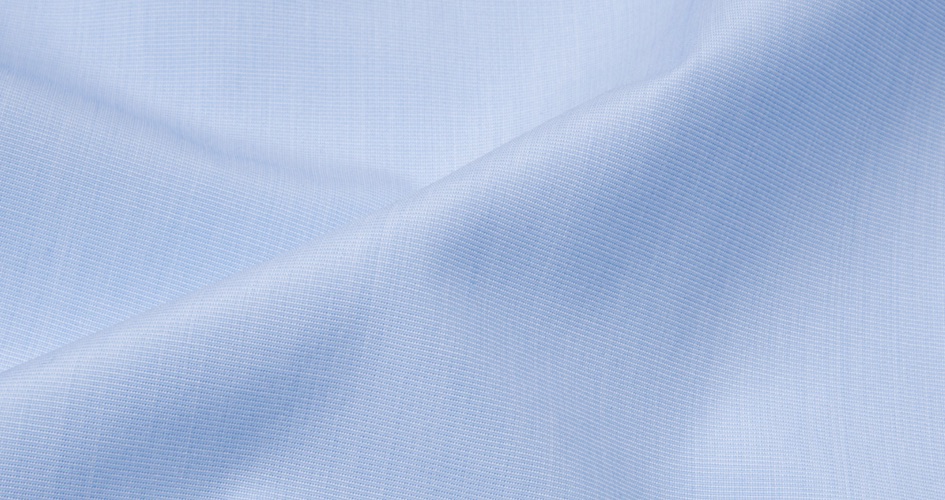Thread Count
If everything else is the same (weave, ply, mill, and type of cotton), higher thread count means a smoother, silkier, more expensive fabric.
Thread count is often referred to with a number like 50s, 80s, 100s, 120s, 140s 160s, etc up to 200s. You would be excused for thinking that 80s = 80 threads per inch, but that’s incorrect (and a common misconception in the industry). Rather, these numbers refer to the yarn size. 140s means there are 140 hanks (1 hank = 840 yards) of yarn in one pound.
Regardless, 140s fabric has a higher thread count than 120s and 160s fabric has a higher thread count than 140s and so on. If you ask us what the threadcount of a fabric is, we will probably tell you something like “140s” because that number is easy to understand even if it’s not a literal measure of threadcount.

140s 2-ply Fabric
Single Ply, Two-Ply and Three-Ply
Ply is how many yarns are twisted together to make a single thread. Fabrics can either be two-ply or single ply. Two-ply means that two yarns are twisted together to make a single thread that is then woven into the fabric. (Note that this is not at all like two-ply toilet paper!). Two-ply fabrics are generally superior to single-ply fabrics.
Compact vs Normal Yarns
Another interesting thing to look for in fabric construction is “compact” yarns. Compact yarns have more or less become the standard for premium Italian fabrics now and are less common in China or India sourced fabrics. A compact yarn is a higher quality yarn that is smoother and finer than the alternative. Fabrics woven from these yarns often feel finer and smoother than you would expect based on their thread count alone. For example. a 100s single-ply compact fabric will feel like a 160s two-ply fabric that is not made from compact yarns.
Warp and Weft
Warp threads run vertically. Weft yarns run horizontally. A fabric will often use different types of threads in the warp vs. weft directions.
Summary
You might see a fabric’s construction described as something like “100/2×100/2”. The way to read this is that it has 100s two-ply threads running in both the warp and weft directions.
A more complex fabric might have a construction described as “140/2+70/1×70/1+140/2” This fabric is a 140s two-ply fabric that has 70s single ply threads interwoven to create a texture or pattern.
Dress shirts with high thread count are more expensive to produce and more desirable if you like your shirts silky, soft and thin. Just remember that thread count is not everything. The weave of the fabric, the ply and the mill that it was produced in are also important factors to consider.
Final Caveat
We hate to come across snobby about thread count. There’s nothing “wrong” with lower thread count fabrics. They can be more affordable and are always great for casual shirts. Consider them accordingly.